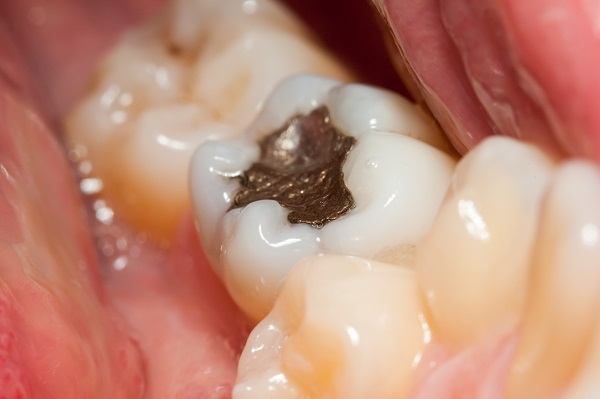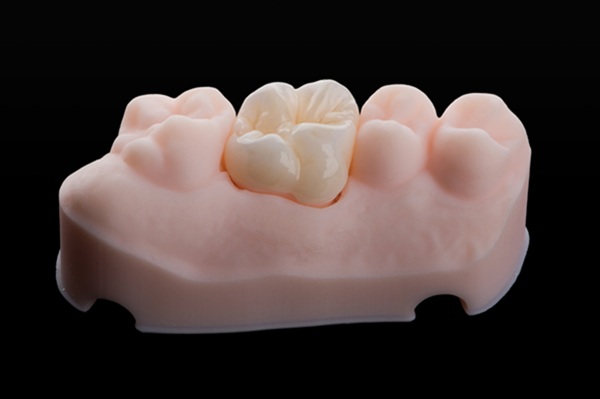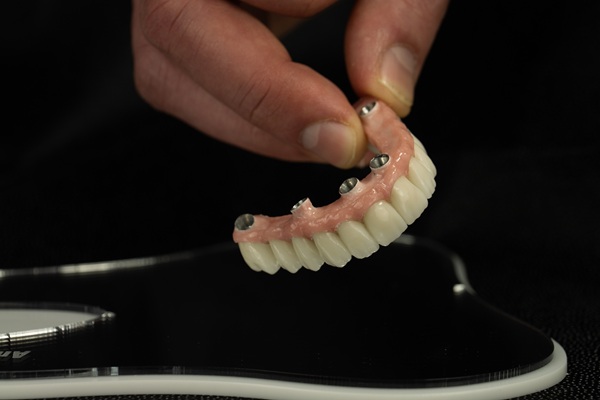3 Signs that Your Dental Filling is Going Bad

A loose filling is more than an inconvenience. Dental fillings protect sensitive areas of your teeth from the outside environment. A loose filling can lead to decay beneath the tooth, heightened sensitivity, or even a root canal infection.
During your exam at Advanced Family Dentistry, Dr. Asadi or a member of our dental team will look for signs of a bad filling. If your filling is damaged or loose, the filling can be removed and you can be fitted with composite resin fillings or another material. If you are curious about the signs of a dental filling going bad, read on to learn more about three common signs that you should have your filling replaced.
3 Signs that Your Dental Filling is Going Bad
Fillings can become damaged or loose for a variety of reasons. Fillings are not intended to last forever. The bond that holds the metal or composite resin in place will eventually weaken over time. This process may occur more quickly if patients grind their teeth at night. Fillings are often placed in molars where bruxism can cause significant damage.
Accidents and trauma are another common cause of loose fillings. If you are in the habit of using your teeth as tools, you may be risking a damaged filling. We advise our patients to never use their teeth to open plastic bottles or to pry open objects of any kind. Common signs that your fillings are compromised include:
The Contours of Your Teeth Feel “Off”
Our tongues are finely tuned to any disturbances in your teeth. Many patients may notice a change in how the surface of a tooth feels if a dental filling has become loose or damaged. If you find that your tongue is drawn to a particular tooth, it may be a sign that something about the texture of a tooth has changed.
A loose or damaged filling may also cause your bite to feel off when you close your mouth. The snug fit of your teeth is called occlusion, and any change in the fillings may be noticed as your teeth interlock when your mouth is closed.
Increased Sensitivity
Our enamel insulates a tooth’s inner nerves from drastic temperature changes. A missing or loose filling can allow hot or cold food or drinks to aggravate the sensitive pulp. If you notice heightened sensitivity to hot or cold drinks or food, this may be a sign that your filling is loose or that you have untreated tooth decay.
Discomfort When Eating
If one area of your tooth is consistently uncomfortable or the source of pain, you may have a damaged or loose filling. Eating can place pressure on the filling, which may aggravate the tissue below. If food particles or liquids creep under a loose filling, that can also cause discomfort.
Discomfort or oral pain may be present even when you are not eating. Discomfort is one of the most common signs of a damaged filling.
Other Considerations
Only a professional dentist can accurately diagnose a loose dental filling. A visual inspection can often be useful when determining if you need to see a dentist. Dental fillings that are going bad may become discolored. You may also be able to see where the filling is becoming separated from the tooth.
It is not uncommon for a bad feeling to cause no noticeable symptoms. This is one reason why it is so important to schedule regular checkups with our dental office. Dr. Asadi is an advanced general and cosmetic dentist who is dedicated to providing excellent care. He is a member of the American Dental Association, the Arizona Dental Association, and a local member of Spear Education.
Making the Most Out of Your Dental Fillings
Many of our patients ask, “How long will my filling last?” There is no single answer to this question. Each patient comes with unique oral characteristics: oral hygiene habits, the number of visits to the dentist, bite characteristics. Generally speaking, dental fillings last anywhere from five to 10 years. Some patients can keep their fillings for more than 10 years.
While dental fillings have a shorter lifespan than veneers and dental crowns, the restorative option is highly affordable. When fillings are used for restorative purposes, many dental insurance plans cover all or part of the treatment cost.
To make the most out of your dental fillings:
Treat bruxism with a mouthguard or alternative treatment
Brush at least twice a day with fluoride toothpaste and floss daily
Cut back on sugary foods
Rise with a quality therapeutic mouth rinse to reduce oral bacteria
Avoid acidic foods and drinks
Visit our office twice a year for cleanings and check-ups
What to Expect During Your Filling Replacement
If your fillings need to be replaced, Dr. Asadi can handle every step of the removal and replacement process at his dental practice. Dental fillings may need to be replaced for a variety of reasons. Failure to remove fillings can result in oral discomfort and dental problems like tooth decay and advanced infections. A loose or damaged filling can even lead to a root canal infection.
To prevent significant dental problems, Dr. Asadi may recommend that your fillings are replaced. The treatment process for replacing dental fillings is straightforward. Special care will be taken when removing your worn dental filling.
Fillings are commonly made from amalgam (metal) or composite resin. The composite-based materials are a mixture of silica and biocompatible glass. Once the old fillings have been removed, any decayed tissue will be removed. Then, the treatment area will be thoroughly cleaned to prevent further decay.
To ensure that a strong bond is obtained, a special etching liquid will be used. Once your tooth is prepared, amalgam, composite resin, or another material will be artfully applied by Dr. Asadi. Special consideration will be made to ensure that the final results are cosmetically pleasing and functional.
Amalgam quickly hardens on its own while the composite resin is cured using a special blue light. Metal fillings are typically used to restore molars while the composite resin is used for visible portions of the tooth, although composite resin can often be used on any part of the tooth.
Once the material has hardened, minor adjustments can be made to ensure that the results are aesthetically pleasing and do not interfere with your bite. Dr. Asadi will take the time to ensure that your filling is carefully placed so it lasts for several years or longer. Fillings can often be replaced in well under half an hour.
Schedule Your Dental Filling Placement Today
Dental fillings provide a wide range of restorative roles. When your filling does eventually wear down or become loose, it can be replaced through a straightforward and convenient treatment at our office. To schedule your next visit, please contact our office online or call (520) 353-3002.
Recent Posts
Dental fillings are made of artificial substances, and they are used to fill the holes in your tooth left due to decay. They can also fix damaged, cracked, or broken teeth. Fillings are needed to help restore the structure of your tooth and help aid in your dental health for years to come. A dental filling…
When you invest in teeth straightening treatments, like braces or Invisalign®, it is important to think of what comes after you stop wearing them. You might wonder how long teeth straightening treatments last. Well, it all depends on how you treat your teeth afterward.When people want a straight smile, they usually only consider the time…
A cosmetic dentist can help create positive changes to your teeth, improving the aesthetics of your smile. However, a cosmetic dentist can also address certain issues that negatively impact your teeth and sometimes improve their function.Many patients have one or more issues that negatively impact their teeth. Our cosmetic dentist can help address these. Treatments that…
Cosmetic dentistry includes a range of services that improve the person’s smile by addressing cosmetic imperfections with the teeth, gums, jaw alignment, and more. It is helpful to have a good understanding of the more common services that are generally offered by cosmetic dentistry practices to determine if treatment is right for your needs.Every cosmetic…


